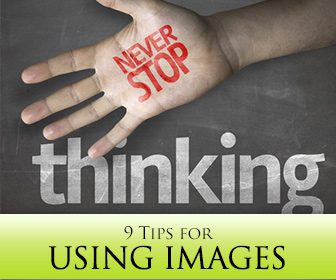6 Lessons Using Smartphone Cameras



For the first lesson of the week a nice warmer is to use some newspaper photographs that represent news stories from the previous week. Select photographs that are linked to a variety of news stories. Make sure you choose photos that have a range of difficulty; it’s always good to have a couple of more obvious ones. Put your students into pairs and stick up the photographs around the classroom. Ask the students to go and look at the photographs in their pairs and discuss which news stories they think they are related to. They should then make a list of the photographs and write down the stories that they refer to. If they don’t know ask them to create a story idea to match the photograph. The pairs should then join up with another pair and discuss their ideas. Class feedback usually brings out some fun and interesting ideas. The nice thing about this warmer is that it can be used every week with different stories.
Images can also be used to prompt a discussion or debate. Choosing a strong photograph which represents a controversial topic can be a great lead in to discussion or debate lessons. For debate lessons choosing two images that show contrasting views on a topic can be a good starter. For example choosing a picture of a beauty pageant alongside a picture representing child exploitation can evoke a strong debate.
Put students into groups of 3 to 4 and give them a mixed assortment of newspaper photographs and headlines. Ask the students to match the correct headline to the photograph. Another option is to just give out the photographs and ask students to make up their own headlines and then give them the correct headline and compare.
This is a fun activity and should bring out the humour in your students. Give out some photographs of varying types. Maybe you could find pictures of animals or people in strange situations or with strange expressions on their faces. Students should then come up with captions for the photographs. This could be made into a competition with voting for the funniest captions.
Photographs can be used to help students create characters in creative writing lessons. Give out some images of people with differing ages, situations, nationalities etc; try and choose strong images of interesting looking characters. Ask your students to use the photograph they are given to create a character profile. This is a great way to get your students to use character adjectives. They should describe what they see but also what they think the character’s personality, lifestyle and occupation is.
One way that the above idea can be extended is to get your students to team up with another. They can then put both their characters into a situation where there is a conflict and write a short dialogue. The students can then role play their dialogues in front of the class. Another extension is to write a monologue using the character they have created.
Images of places can be very evocative and can promote the use of some great descriptive language. Choose some photographs that are strong visually. Maybe they show extreme weather or idyllic scenes or you could choose urban scenes of people living on the street or at a festival. The students should work in pairs and first of all discuss what they see. Then ask them to think about how someone would feel in that place and come up with a story idea based in the setting. They could then work on developing the story.
Pictures can be useful when teaching grammar. For example giving students pictures of people doing various activities and then asking them to describe what they see will encourage the use of the present continuous. Using pictures to encourage the correct use of prepositions can also be useful. Give students a picture of a room and in pairs ask them to describe the position of different objects; encourage peer correction.
In an Upper Intermediate or Advanced class put students in groups of 3 or 4. Give one student in the group a picture of a famous painting and ask them to describe what they see. The other students should try to draw a representation of what has been described. They can then compare their drawings. Continue until each person in the group has had a chance to describe a painting.
You can also use picture dictation for lower level groups to practise vocabulary of position and prepositions. Use pictures that show a room and again in groups of 3 or 4 ask one student to describe the objects in the room and where they are situated. The other students should try and draw a plan based on what the student says. It is advisable to choose the strongest student in the group to describe first.
Giving students authentic and interesting images from which to practise their speaking or writing skills will encourage their creativity and language use.